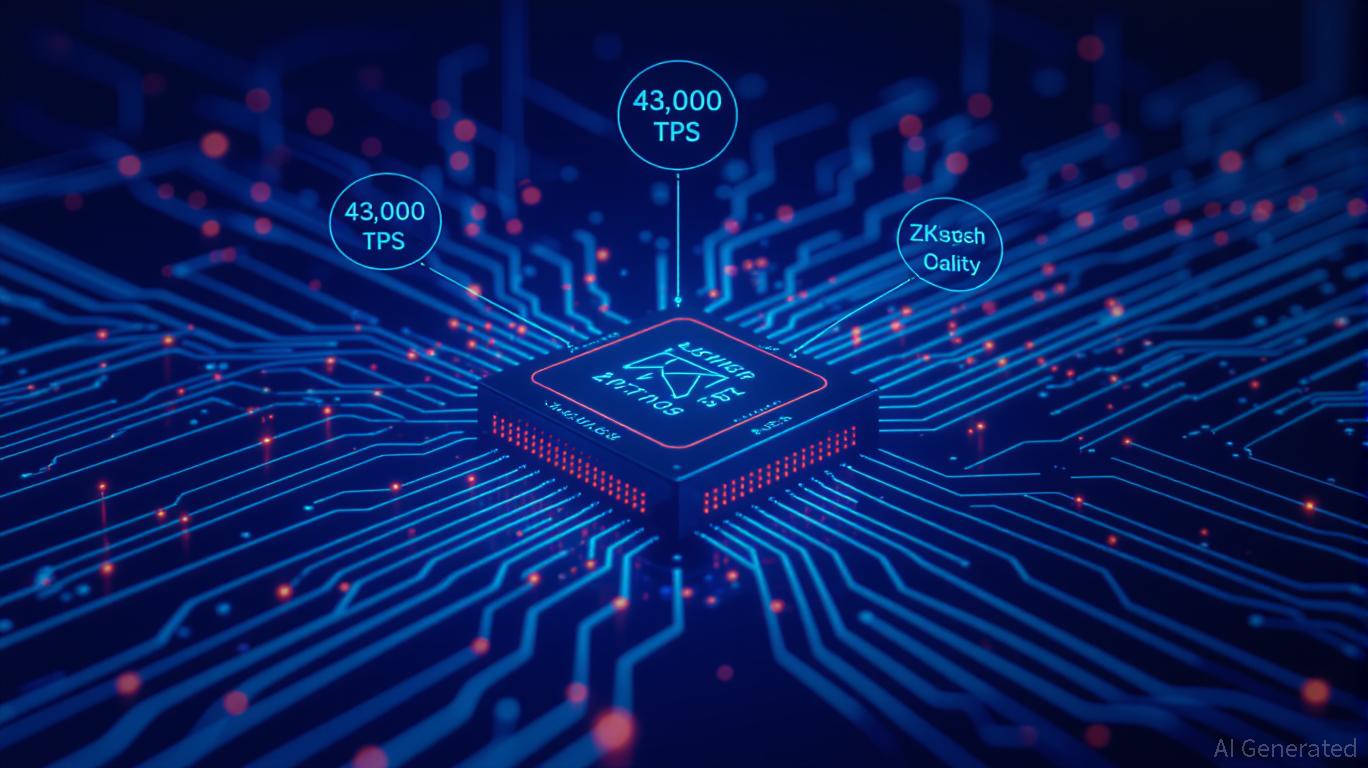ZK Atlas Upgrade: Transforming Blockchain Scalability and Driving Institutional Integration
- ZKsync's 2025 Atlas Upgrade introduces scalable ZK infrastructure with 43,000 TPS for ETH transfers, addressing blockchain's enterprise adoption barriers. - Technical components like Atlas Sequencer and Airbender prover enable sub-second finality, while ZKsync OS supports EVM compatibility and modular execution. - Institutional adoption accelerated by ZK Stack liquidity sharing and Vitalik Buterin's endorsement, with BlackRock's $1B tokenized fund leveraging ZK proofs. - Upcoming Fusaka upgrade aims to b
Technical Breakthroughs: The Architecture of Scalability
The Atlas Upgrade unveils three foundational innovations that transform ZK infrastructure: the Atlas Sequencer, Airbender prover, and ZKsync OS. These components collectively propel ZKsync to new heights in performance. For example, native ETH transactions can now reach up to 43,000 transactions per second (TPS) with finality in under a second, stablecoin operations achieve 15,000 TPS, and high-frequency oracle updates manage 23,000 TPS, all with latency ranging from 250 to 500 milliseconds
The Atlas Sequencer streamlines transaction ordering and processing, alleviating congestion found in conventional L2 systems. At the same time, the Airbender prover, which utilizes a RISC-V-based zkVM,

Institutional Adoption: From Technical Excellence to Real-World Impact
The technical advancements of the Atlas Upgrade have directly contributed to increased institutional uptake. Central to this is the ZK Stack, a suite of tools that facilitates effortless liquidity movement between Ethereum’s Layer 1 and Layer 2. This capability is particularly attractive to businesses aiming to maintain privacy while ensuring global interoperability, especially in sectors where regulatory adherence and operational performance are crucial
Importantly, Vitalik Buterin’s public support for the upgrade has further boosted its reputation. He emphasized ZKsync’s ability to handle 15,000 TPS and its ZK-powered scalability as essential for Ethereum’s institutional expansion
Practical deployments further highlight ZKsync’s significance for enterprises. By the fourth quarter of 2025, the platform had completed 1.2 billion transactions, with financial organizations utilizing its privacy-oriented ZK proofs for international payments and tokenized asset management
Future Outlook: Competing in the Enterprise Blockchain Arena
Looking forward, ZKsync’s planned Fusaka upgrade, which aims to raise throughput to 30,000 TPS, may further strengthen its competitive edge over rivals such as
For those investing, the Atlas Upgrade marks the transition of ZK infrastructure from an experimental phase to a fully operational platform. The intersection of technological progress, institutional alliances, and innovative tokenomics presents a strong case for sustained value, though potential regulatory changes and competition from other L2 solutions suggest a measured approach is prudent.
Conclusion
The ZK Atlas Upgrade illustrates how ZK infrastructure can close the gap between blockchain’s theoretical advantages and the practical needs of enterprises. By achieving high levels of scalability, privacy, and interoperability, ZKsync has not only transformed Layer-2 capabilities but has also accelerated the institutional embrace of Ethereum-based technologies. As the blockchain sector continues to develop, ZKsync’s strategic innovations ensure its role as a major force in the evolution of decentralized infrastructure.
Disclaimer: The content of this article solely reflects the author's opinion and does not represent the platform in any capacity. This article is not intended to serve as a reference for making investment decisions.
You may also like
China's Economy Stalls Amid Record Drop in Investments

Zcash (ZEC) To Rise Further? Key Harmonic Pattern Signals Potential Upside Move

FET To Bounce Back? Key Harmonic Pattern Hints at Potential Upside Move

Sui (SUI) To Make Reversal? This Emerging Bullish Fractal Setup Suggest So!
